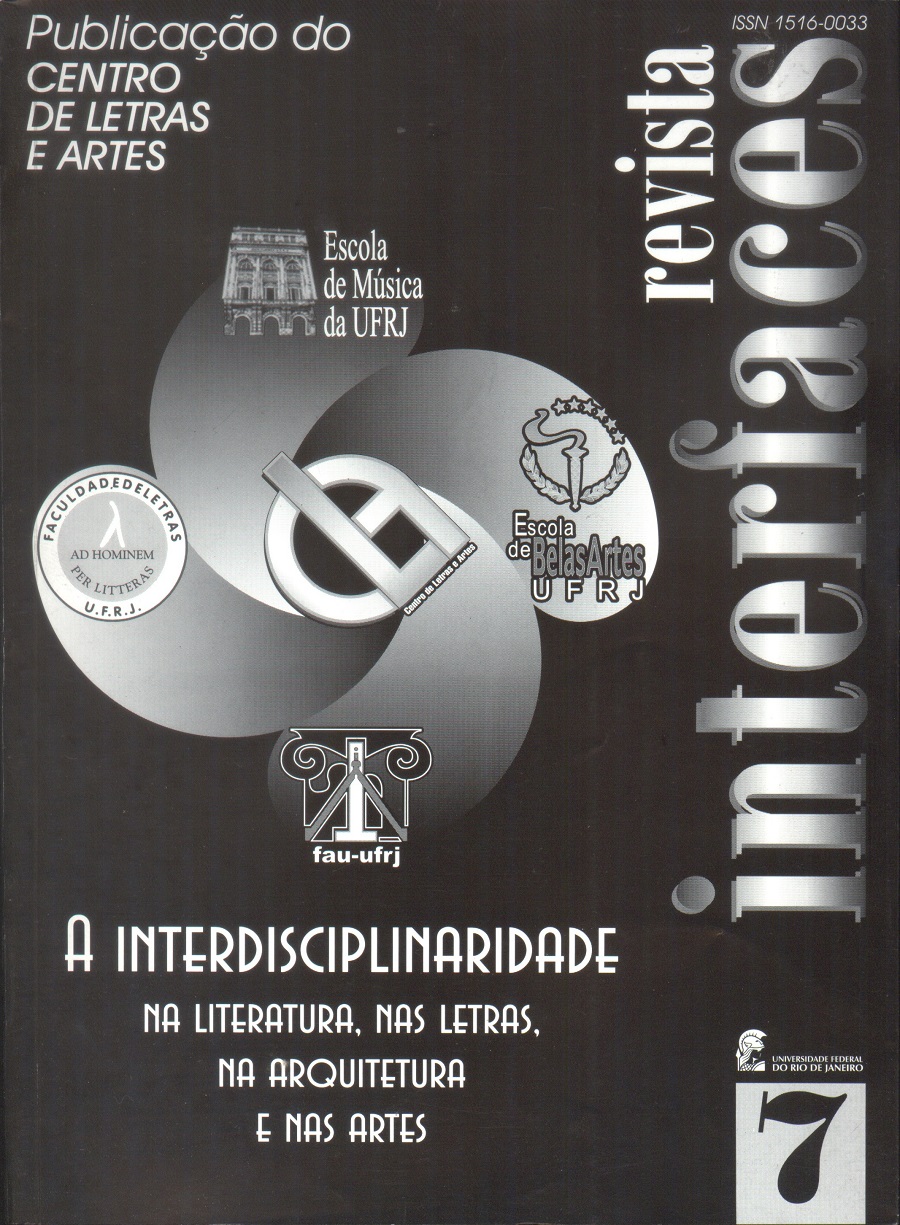As Artes Plásticas e a crítica literária no século XIX: A “eterna” modernidade de Baudelaire
Palavras-chave:
Critica literária, ArteResumo
The 19th Century art, with the shift in historic time comprehension, following the evolutionist vision, began to be understood as a continuous linear sequency, strengthening the superiority of the "new" and narrowing the gap between "modern" and "old”, such as the fruition period. The acknowledgement gradually attributed to Baudelaire confirms his contemporaneousness as a poet and as an author of essays on Salons de Art of Paris, where he would anticipate the paths to be tracked by the art. This intilmate bond between literature and visual arts, yet initiated in the 15th Century, would enrich both fields' artistry. The Baudelairean feeling of affirmation and refuse towards modernization began to exhibit synchrony with the aesthetic thinking tendencies ever since there was a distrust in progress, an aspect that would qualify him for the post-modernity herald role.
Referências
ARGAN, G. C. (1995 a) Arte moderno: do Iluminismo aos movimentos contemporâneos. São Paulo : Schwarcz,
______. (1995 b) Arte e crítica de arte. Lisboa : Estampa,.
BAUDELAIRE, C. (1985) As flores do mal . Tradução de Ivan Junqueira. Rio de Janeiro: Nova Fronteira.(1965). Critique d ’art . Paris : Armand Colin.
______. (1986). The sa/on of J846 . In: HOLT, Elizabeth Gilmore. From the classicists to the impressionists: art and architecture in the 19th Century. London: Yale University.
BENJAMIN, W. (1994). Charles Baudelaire: um lírico no auge do capitalismo. São Paulo: (Obras escolhidas Ht ).
BEYLE, M. H. Salon de 1824 . In: HOLT, E. G. (1986). From the classicists to the impressionists: art and architecture in the 19th Century. London: Yale University,
BERMAN, M. 119861. Tudo aue é sólido desmancha no ar : a aventura da modernidade. São Paulo: Companhia das Letras.
COELHO, T. (org.) (1988). O saião de Î859: O artista moderno. In: A modernidade de Baudelaire. São Paulo,.
______. (1988). O pintor da vida moderna. In: A modernidade de Baudelaire. São Paulo.
COMPAGNON, A. (1996). Os cinco paradoxos da modernidade. Belo Horizonte: Universidade Federal de Minas Gerais.
DELACROIX, E. (1979). Diário. (estratos). Lisboa : Estampa.
DIDEROT, D. (1994). Article Génie . In: Oeuvres esthétiques. Paris : Garnier.
GREENBERG, C. (1996). Arte e cultura: ensaios cr í ticos. São Paulo: Ática.
HAAR, M. (1994). Art et vérité. In: Essai sur l'onbloaie des ouvres. Paris : Hatîer.
ORLANDI, E. (ed.) (1968). The life and times of Delacroix. London : Hamlyn Publishing Group.
PEVSNER, N. (1995). The sources of modern architecture and design. Londres : Thames and Hudson.
STAROBINSKI, J. (1991). Diderot dans léspace des peintres. Paris : Réunion des Museés Nationaux.
______. (1994). La vision fidèle. In: L'invention de la liberté. Genève : Skîra.
STENDHAL (1986). Safon de 1824. In: HOLT, Elizabeth Gilmore. From the classicists to the impressionists: art and architecture in the 19th Century. London: Yale University. Brasiliense


